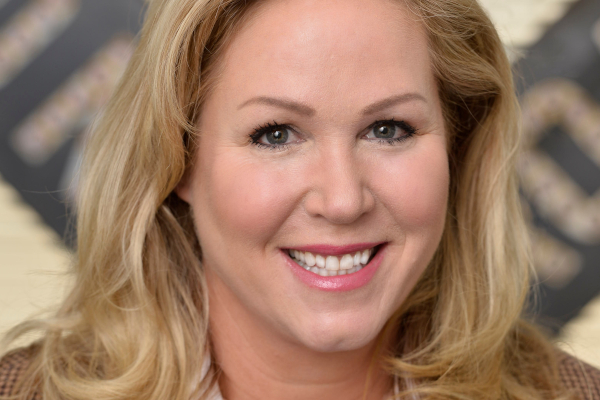CEO Update LIVE: Opportunities to retain, gain members
CEO Update LIVE: Opportunities to retain, gain members
- June 5, 2020 |
-
 Kathryn Walson
Kathryn Walson

Some CEOs expect associations to grow during economic downturn as they make themselves essential, invent new revenue models
 Darr
Darr
Although associations have suffered grave financial losses as a result of the pandemic, CEOs should view the crisis as an opportunity to be visionaries and invent new revenue streams, panelists said during the CEO Update LIVE: Member Engagement and Revenue Reinvented webcast.
"For health reasons, for cost reasons, for efficiency reasons, I do think we all have to step back and realize that we're probably never going back to the way it was," said Bob Weidner, CEO of the Metals Service Center Institute.
Also on the panel: Matt Chase, CEO of the National Association of Counties; Linda Bauer Darr, CEO of the American Council of Engineering Companies; and Bob Voltmann, CEO of the Transportation Intermediaries Association. CEO Update Editor-in-Chief Lynn McNutt moderated the May 28 discussion.
Weidner said executives need to sharpen their axes and "harvest programs that we may have emotional ties to, that truly were dying a slow death of their own."
MSCI has turned to a "less is more" strategy of providing relevant and insightful content, such as "how to reopen a warehouse or a three-star general talking about leading in a crisis," he said.
Meetings and education, which have accounted for 50% of MSCI's revenue, have gone virtual. MSCI will charge 70% less for the virtual Economic Summit in September than it would for an in-person event. However, virtual events still come with costs, including speaker fees.
"As the CEO, our number one job is to make sure we are thinking about what's on the horizon before anybody else does," Weidner said. "We'd better figure out what our business model is going to be in the future."
Make your group essential
TIA is aiming to boost revenue from services that help entrepreneurs better run their businesses, with the goal of one-third of revenue coming from dues, one-third from meetings and one-third from business services, Voltmann said.
"Now, since we've all proven that Zoom and online works, we may do it all virtually, and that will save costs even more," Voltmann said.
TIA has reached 30% of its membership through webinars and has generated close to 500 nonmember attendees. The group has hired a consulting firm to help assess member engagement so they know which members are at risk of non-renewal.
"We can customize our messaging to members and give them a much more Amazon-like approach from the association so that … we're meeting their direct needs," Voltmann said.
TIA also solicits member feedback on what they want from the association, and the group has created online communities.
"Our intention is to grow through this," Voltmann said. "The whole idea is to keep that member loyalty and member engagement up. So when it comes to renewal time, they're there."
Engaging nonmembers
This is also critical time to recruit new members, Darr said.
"New member recruitment was going out the window for a lot of people. But that really is counterintuitive when you think about it, because associations are more important during a crisis than they are when there's not a crisis going on," Darr said. "This is the opportunity now to kind of go for it to look for the silver lining. I want to grow during this period."
ACEC helped members apply for forgivable loans through the Paycheck Protection Program, and many received the funding, she said. The association also offered free services for three months to nonmembers to show how ACEC is essential and can help them through the crisis.
Since the pandemic hit, ACEC has doubled the frequency of its newsletter; launched a research institute that conducts weekly member surveys; produced podcasts every other day and two webinars a day, including one webinar that had 1,000 attendees; and held twice-weekly meetings with its 52 member organizations.
"They rely on us for a lot. … We have leadership programs. We have contract documents that they need," Darr said. "We have had more people on our webinars in the last 2 1/2 months than we usually have in half a year."
"This (is a) level of engagement that we have never experienced before," Darr said. "(Members) want to learn from one another, and we are the conduit for that. And for that I'm very grateful because that's what's (going to) keep us going strong."
Investing in the future
NACo conducts a quarterly analysis of strengths, weaknesses, opportunities and threats, Chase said. In December, the group split its financial reserves into four buckets, ranging from short- to long-term.
The group dedicated "part of our reserves to invest three to 10 years ahead on new revenue streams" because programs can take that long to start making money, he said. The group has already found one way to generate more revenue.
"We got tired of companies coming to us paying a small entry fee to gain access to our membership, making millions, and then kind of saying, ‘Oh, we don't need this association anymore,'" Chase said. "So now, with certain companies, when they come to us, we say, ‘Yeah, we'll partner, but we actually want equity in your growth.' So if you take off based (on) our network, then we are going to have an upside to it."
NACo also began using Microsoft Power BI (business intelligence) to track engagement.
"We can look at that score and say, ‘Hey, who's at risk of not renewing?'" Chase said.
"We say, ‘We're an 85-year-old startup,'" he said. "You have to honor the traditions of the association. ... But you have to keep pushing forward."
